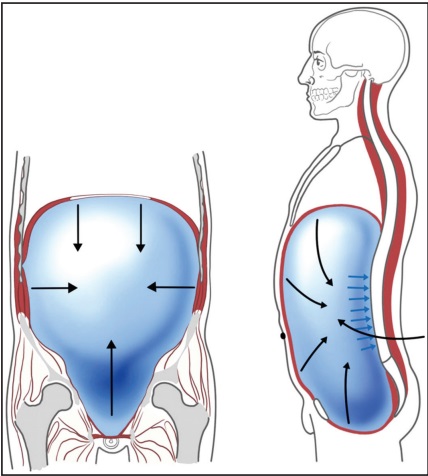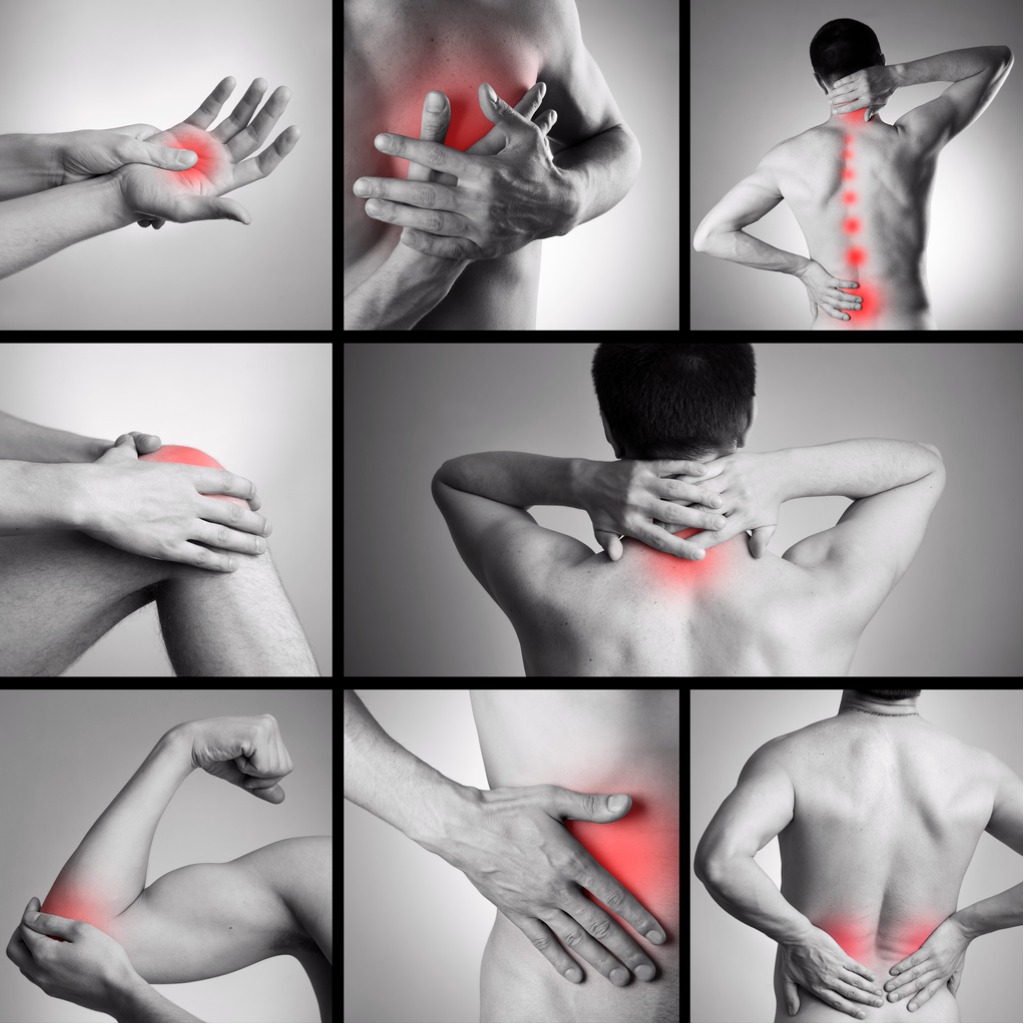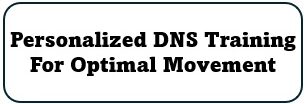Dynamic Neuromuscular Stabilization (DNS).
DNS is a comprehensive approach to movement and rehabilitation based on developmental kinesiology.
DNS emphasizes the importance of the Integrated Spinal Stabilization System, which involves the coordinated action of several key muscle groups:
- Diaphragm
- Pelvic floor muscles
- Entire abdominal wall
- Deep spinal muscles
These muscles work together to create optimal intra-abdominal pressure and spinal stability, which is crucial for efficient movement and injury prevention.

The Dynamics of DNS
DNS offers a unique method to optimize physical performance and well-being.
- Enhances spinal stability and joint stability and alignment
- Utilizes developmental positions for training
-
Optimizes movement patterns for better performance
- Prevents Injuries


How you Breathe Matters
Breathing patterns play a crucial role in our overall movement patterns
The diaphragm is a large, dome-shaped muscle located at the base of your lungs. While its primary function is to help you breathe, it’s also a key player in your body’s core stability system.
The diaphragm works with other core muscles to stabilize your spine and maintain proper posture.
If you breathe shallowly (using mostly your chest), it can lead to poor posture and decreased core stability.
It is a “Pressure System” for Stability
Proper diaphragmatic breathing helps regulate this pressure, which supports your spine during movement.
- Core Control: Good breathing patterns enhance stability, which is essential for all types of movement, from simple daily activities to complex athletic performances.
- Reduced Risk of Injury: By maintaining proper core stability through good breathing patterns, you can reduce the risk of injuries, especially in the lower back.
- Enhanced Performance: Athletes and performers can benefit from improved breathing patterns, as they allow for better oxygen delivery to muscles and enhanced overall body control.
- Better Posture: Better core control and breathing helps improve posture. Better posture helps core control and breathing.
Your breathing pattern and the function of your diaphragm are fundamental to how your body moves and performs. By paying attention to and improving your breathing, you can enhance your overall movement patterns, posture, and physical performance.

Discover the Benefits of
Dynamic Neuromuscular Stabilization
Assessment and Treatment Approach
The DNS approach involves:
- Comparing a patient’s posture and movement patterns to those of neurologically healthy infants.
- Identifying discrepancies in movement patterns.
- Using specific exercises and manual techniques to restore optimal function.
DNS aims to improve overall movement quality, reduce pain, enhance performance, and prevent injuries across a wide range of populations, from everyday individuals to high-level athletes.
The goal is to be strong, fluid, flexible, and agile as you move through your world
Strength
Develop robust core strength for stability and power in every movement.
Fluidity
Move with grace and ease, eliminating stiffness and promoting natural motion.
Flexibility
Increase your range of motion and reduce the risk of injury through improved flexibility.
Agility
Enhance your reaction time and coordination for quick, efficient movements.

Unlocking Movement Secrets from Infants
Clinical Trials Insights
Discover the latest research on DNS effectiveness.
Clinical Trials
Several clinical trials have investigated the effects of DNS:
- A randomized controlled trial by Karartı et al. (2023) examined the effects of DNS in older patients with chronic non-specific low back pain. The study found that DNS improved functional movement patterns and functional balance performance26.
- Marand et al. (2023) conducted a clinical trial comparing DNS to core stabilization exercises in people with multiple sclerosis. The results showed that DNS was more effective in improving balance, trunk function, and fall prevention16.
- A study by Kong et al. (2024) evaluated the effects of DNS/Vojta therapy on low back pain. The meta-analysis revealed significant improvements in pain intensity, disability severity, and quality of life in individuals with low back pain22.
- Babagoltabar-Samakoush et al. (2025) investigated the effects of an 8-week DNS training program on strength, endurance, and flexibility in adults with intellectual disabilities. The study demonstrated significant improvements in these areas, with benefits maintained at a 2-month follow-up43.
Review Articles
- A scoping review by Sharma et al. (2024) examined the efficacy of DNS as a spinal stabilization strategy in non-specific chronic low back pain. The review highlighted DNS efficacy in improving core muscle activation and pain-related symptoms29.
- Kong et al. (2024) conducted a systematic review and meta-analysis on the effects of DNS/Vojta therapy on low back pain outcomes. The review found significant improvements in pain intensity, disability severity, and quality of life22.
- Marand et al. (2022) published a study protocol for a clinical trial investigating the effects of DNS on balance and trunk muscle activity in patients with multiple sclerosis13.
Evidence for Different Diseases
- Low Back Pain: Multiple studies have shown positive effects of DNS on chronic non-specific low back pain, including improvements in pain intensity, disability, and quality of life22922.
- Multiple Sclerosis: Research has demonstrated that DNS can improve balance, trunk function, and fall prevention in people with multiple sclerosis1613.
- Intellectual Disabilities: A study found that DNS training can improve muscular strength, endurance, and flexibility in adults with intellectual disabilities43.
- Respiratory Complications: A review article examined the effect of DNS/Vojta therapy on respiratory complications of neuromuscular diseases, suggesting potential benefits in this area40.
- Stress Urinary Incontinence: A pilot study compared the efficacy of DNS exercises to Kegel exercises for stress urinary incontinence in women, indicating potential applications in this field35.
In conclusion, while the evidence base for DNS is growing, more high-quality clinical trials are needed to fully establish its efficacy across various conditions. The existing research suggests promising results, particularly in the areas of low back pain, multiple sclerosis, and physical fitness in individuals with intellectual disabilities.
References:
- Karartı C, et al. (2023). The effects of dynamic neuromuscular stabilization approach on clinical outcomes in older patients with chronic nonspecific low back pain: a randomized, controlled clinical trial. Arch Phys Med Rehabil.
- Marand LA, et al. (2023). Effect of Dynamic Neuromuscular Stabilization on Balance, Trunk Function, Mobility, Falling, and Spasticity in People with Multiple Sclerosis: A Randomized Controlled Trial. Arch Phys Med Rehabil.
- Kong L, et al. (2024). Effects of Dynamic Neuromuscular Stabilization/Vojta Therapy on Low Back Pain: A Systematic Review and Meta-Analysis. J Manipulative Physiol Ther.
- Babagoltabar-Samakoush H, et al. (2025). Effectiveness of dynamic neuromuscular stabilization training on strength, endurance and flexibility in adults with intellectual disabilities: a randomized controlled trial. Sci Rep.
- Sharma S, et al. (2024). Bridging Dynamic Neuromuscular Stabilization Synergism with Movement Control Impairment in Non-specific Chronic Low Back Pain: A Scoping Review. J Manipulative Physiol Ther.
- Marand LA, et al. (2022). Effect of dynamic neuromuscular stabilization on balance and trunk muscle activity in patients with multiple sclerosis: study protocol for a randomized controlled trial. Trials.
- Marand LA, et al. (2020). Effect of dynamic neuromuscular stabilization on balance and trunk muscle activity in patients with multiple sclerosis: study protocol for a randomized controlled trial. Trials.
- Gulrandhe P, et al. (2023). Effect of the Dynamic Neuromuscular Stabilization Technique on Functional Capacity in Overweight and Obese Individuals: A Randomized Controlled Trial. Cureus.
- Comparing the Efficacy of Dynamic Neuromuscular Stabilization Exercises and Kegel Exercises on Stress Urinary Incontinence in Women: A Pilot Study. (2024). Cureus.
- Marand LA, et al. (2024). Effect of dynamic neuromuscular stabilization on respiratory complications of neuromuscular diseases: A systematic review. J Bodyw Mov Ther.
